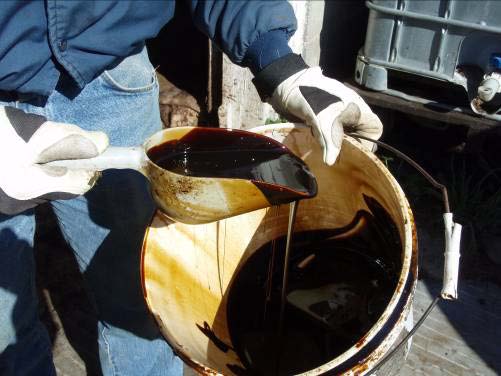Effect of Molasses Supplementation on Ruminal Fermentation
Dr. Kathy Soder, USDA-ARS Pasture Systems and Watershed Management
Research Unit, University Park, PA
Background
As milk prices fluctuate and input costs increase, grazing dairy operations seek lower-cost feed alternatives to maintain or improve milk production while reducing feed costs. Sugar cane molasses is a rich source of sugars, is available in organic form, and may be a viable supplementation option to corn. However, there is no literature available that evaluates molasses as the only supplement for grazing dairy cows. Anecdotal results, as reported by farmers, are mixed- some farms use molasses successfully while others report major milk production or body condition losses. It is not well understood which factors impact the success or failure of molasses. Therefore, to begin to understand the mechanisms by which molasses impacts grazing dairy cows, two experiments were conducted to evaluate the effects of molasses on ruminal fermentation of a pasture diet.
[
A 4-unit continuous culture fermentor system was used in two experiments to evaluate the effects of molasses supplementation on ruminal fermentation of a pasture diet. This system ‘mimics’ the rumen: it is inoculated with rumen fluid from a donor cow, maintained under conditions similar to a rumen (temperature, buffer (saliva), no oxygen), and ‘fed’ various diets to evaluate the products of ruminal fermentation, including:
- Nutrient digestibility
- Ruminal pH
- Volatile fatty acid concentrations
- Ammonia concentrations
- Microbial protein synthesis
The first experiment compared molasses with corn supplementation. Treatments included:
- Orchardgrass pasture only (Control)
- Molasses (5% DM fed) + pasture
- Corn meal (7% DM fed) + pasture
- Molasses (5%) + corn meal (7%) + pasture
The second experiment evaluated the interaction between level of molasses supplementation and forage quality. Treatments included:
- Molasses (5% DM fed) + high quality pasture
- Molasses (10% DM fed) + high quality pasture
- Molasses (5% DM fed) + low quality pasture
- Molasses (10% DM fed) + low quality pasture
[
Results
- Molasses responded similarly to corn in improving ruminal fermentation
- Both supplements provided only minimal improvements in ruminal fermentation over the pasture-only diet
- No significant interaction between forage quality and level of molasses supplementation
Practical Implications
The considerable on-farm variability in response to molasses supplementation may be due to a number of management and feeding factors, and must be carefully considered when evaluating the success of molasses supplementation. Additionally, there is wide variability in nutrient content of molasses from various sources (i.e. sugar cane, sugar beets, etc.) as well as between batches within source. These factors make it challenging to determine the specific factors that impact response to molasses supplementation.
Pasture-based dairies that feed molasses as the sole source of supplementation energy may need to consider supplementation rates greater than 5% of total DMI, being mindful of total sugar levels which can adversely impact rumen function. Another option is to combine molasses with a starch source such as grain. Sugars are degraded more rapidly in the rumen than starches, and the balance of the two may provide a more stable rumen environment to better utilize pasture forages.
Conclusions
- On-farm response to molasses has been variable
- Research results show minimal impact on ruminal fermentation when molasses is fed at 5% of total DMI
- Many feed and management factors likely to influence results
- Costs for molasses vs. corn need to be considered
- Close observation of cows necessary to evaluate success
- Cow study being completed to assess the effect of molasses on milk production and components, body weight and condition score changes, and economics